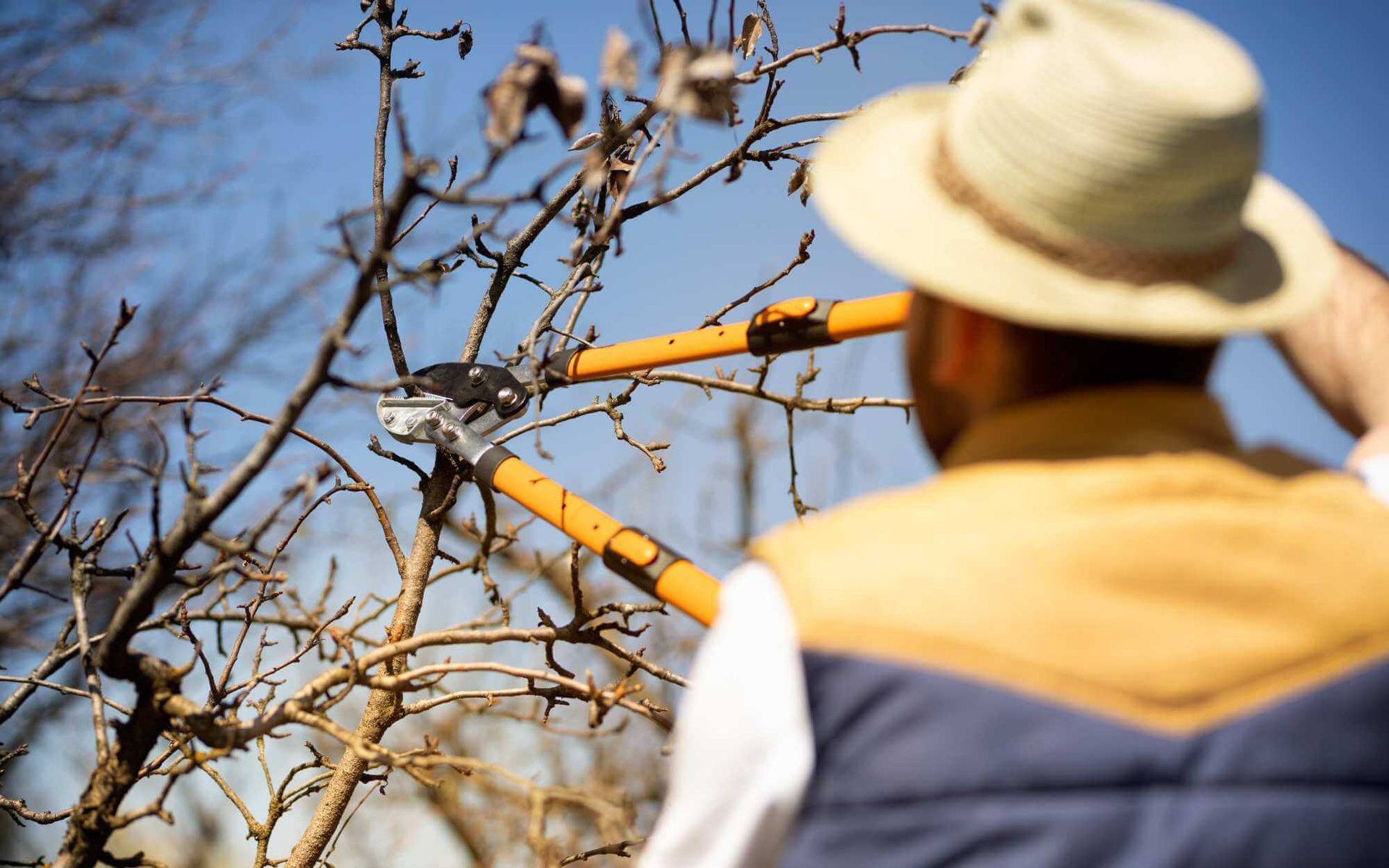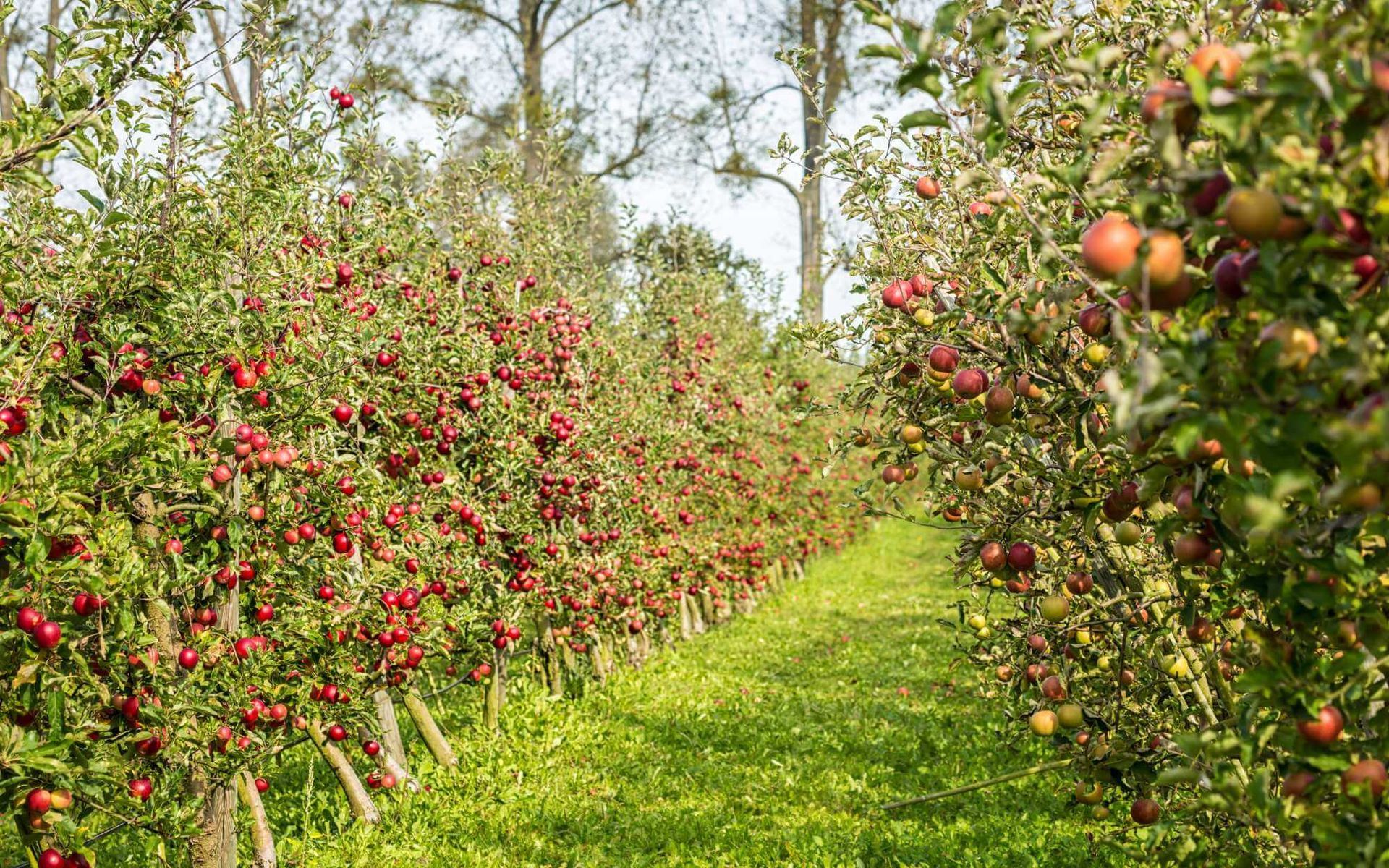When and How to Prune Fruit Trees for Optimal Harvest
PUBLISHED ON
SHARE THIS ARTICLE

Pruning fruit trees might seem like a daunting task, but it's an essential part of maintaining the health and productivity of your trees. Proper pruning reaps bountiful rewards - from encouraging better fruit yield to preventing diseases and promoting tree longevity.
In today's blog, we'll walk through the when, why, and how of
fruit tree pruning to yield an optimal harvest. We'll explore the best techniques, timing, and tools to ensure that your trees are at their most productive and healthiest.
When to Prune Fruit Trees

The main factors that determine the best time to prune fruit trees are the type of tree, weather conditions, and desired outcome.
- Apple Trees: Prune in late winter while the tree is dormant, before the new growth starts, typically between January and early March. This allows you to see the tree's structure and reduces the risk of disease transmission.
- Peach Trees: Unlike other fruit trees, peach trees should be pruned in early spring, just before or as the buds start to bloom. This helps prevent a condition known as "peach tree short life."
- Cherry Trees: These trees are best pruned in late summer, around August, after the harvest. This timing helps to minimize the spread of fungal diseases common in cherry trees.
- Plum Trees: Prune plum trees in the summer, to reduce the risk of infection by silver leaf disease. The ideal time is between late June and early July.
- Citrus Trees: Citrus trees don't require much pruning, but if necessary, do it in late winter or early spring before the new growth begins.
Keep in mind that these are general guidelines and can vary depending on your location and climate. Always observe your tree's growth habits and adjust fruit tree pruning times.
- Cold Climates: In colder regions, it's best to prune fruit trees in late winter or early spring to avoid frost damage to new growth. It also allows the tree to maximize its energy reserves for future growth.
- Warm Climates: In warmer areas, pruning can be done throughout the year as needed. Keep in mind that pruning during extreme heat can stress the tree, so it's best to avoid this.
- Wet Climates: In areas with high humidity and rainfall, pruning should be done during dry periods to prevent the spread of fungal diseases.
- Dry Climates: In drier climates, pruning can be done before or after the rainy season to minimize water loss through open wounds on the tree.
No matter where you live, it's essential to pay attention to the weather and choose a time when the tree is not under any stress (such as during extreme temperatures or drought). It's also crucial to avoid pruning during flowering and fruiting periods, as this can negatively impact the harvest.
How to Prune Fruit Trees
The process of pruning requires specific tools to ensure precision, ease, and safety. Here's a list of the essential tools and equipment needed for pruning:
- Hand Pruners or Secateurs: Ideal for cutting branches less than 1 inch in diameter.
- Lopping Shears: Used for thicker lateral branches, usually those between 1 and 2 inches in diameter.
- Pruning Saws: Useful for cutting branches larger than 2 inches in diameter.
- Pole Pruners: A must-have to reach taller branches without the need for a ladder.
- Protective Gear: This includes gloves to protect your hands, safety glasses to shield your eyes, and sturdy boots to keep your feet safe.
- Pruning Sealer: To cover the cut surfaces and prevent infection or infestation.
Efficient pruning involves a series of thoughtful cuts, each made with a clear understanding of the tree's growth pattern and the goal of optimizing fruit production. Here's a guide to the basic steps of effective pruning, along with some advice on shaping and training fruit trees:
- Inspect the tree: Begin by assessing the tree's shape and identifying any dead, diseased, or crossed branches.
- Remove undesirable branches: Using the appropriate tool, make clean cuts, removing any unwanted branches.
- Thin the tree: Thin out areas of the tree that are overly dense to allow sunlight and air to reach all parts of the tree.
- Shape the tree: Aim for a balanced, open canopy that allows for easy harvesting and optimal fruit growth.
- Train young trees: For younger trees, focus on training them to develop a good structure. Use stakes or weights to guide the growth direction of branches.
Remember, patience is key in pruning. It might take a few seasons for your efforts to visibly pay off, but the improved health and increased fruit production of your tree will be well worth the wait.
Common Mistakes to Avoid

Avoiding common pruning mistakes can significantly enhance your tree's health and productivity. Let's discuss some of these potential pitfalls in more detail:
- Over-pruning or under-pruning: Over-pruning strips the tree of too much foliage, weakening it and reducing fruit production. Conversely, under-pruning leaves the tree crowded, preventing adequate sunlight and air circulation, which can impede growth and encourage disease.
- Pruning at incorrect times: Timing is crucial for pruning. Inappropriate timing can expose the tree to pests and diseases, stress the tree, and affect fruit production. It's crucial to follow recommended pruning times for different fruit tree species and local climatic conditions.
- Neglecting proper sanitation practices: Clean tools are essential to prevent the spread of disease. Always disinfect pruning tools before and after use, especially when moving from one tree to another. Neglecting this step can inadvertently spread diseases and pests.
Prune the Right Time, the Right Way for Optimal Harvests
Proper pruning of fruit trees is essential for their health, productivity, and longevity. It aids in controlling tree size, shaping the tree, allowing ample light and air circulation, and boosting fruit production. So, don't overlook this crucial practice; instead, take a step towards optimal harvests. Your trees and your future harvests will thank you!
If uncertain, don't hesitate to call an expert for guidance. Our
professional tree trimmers are ready to help you set on a fruitful harvest!
Want a free quote or some friendly advice? Call our team today:






